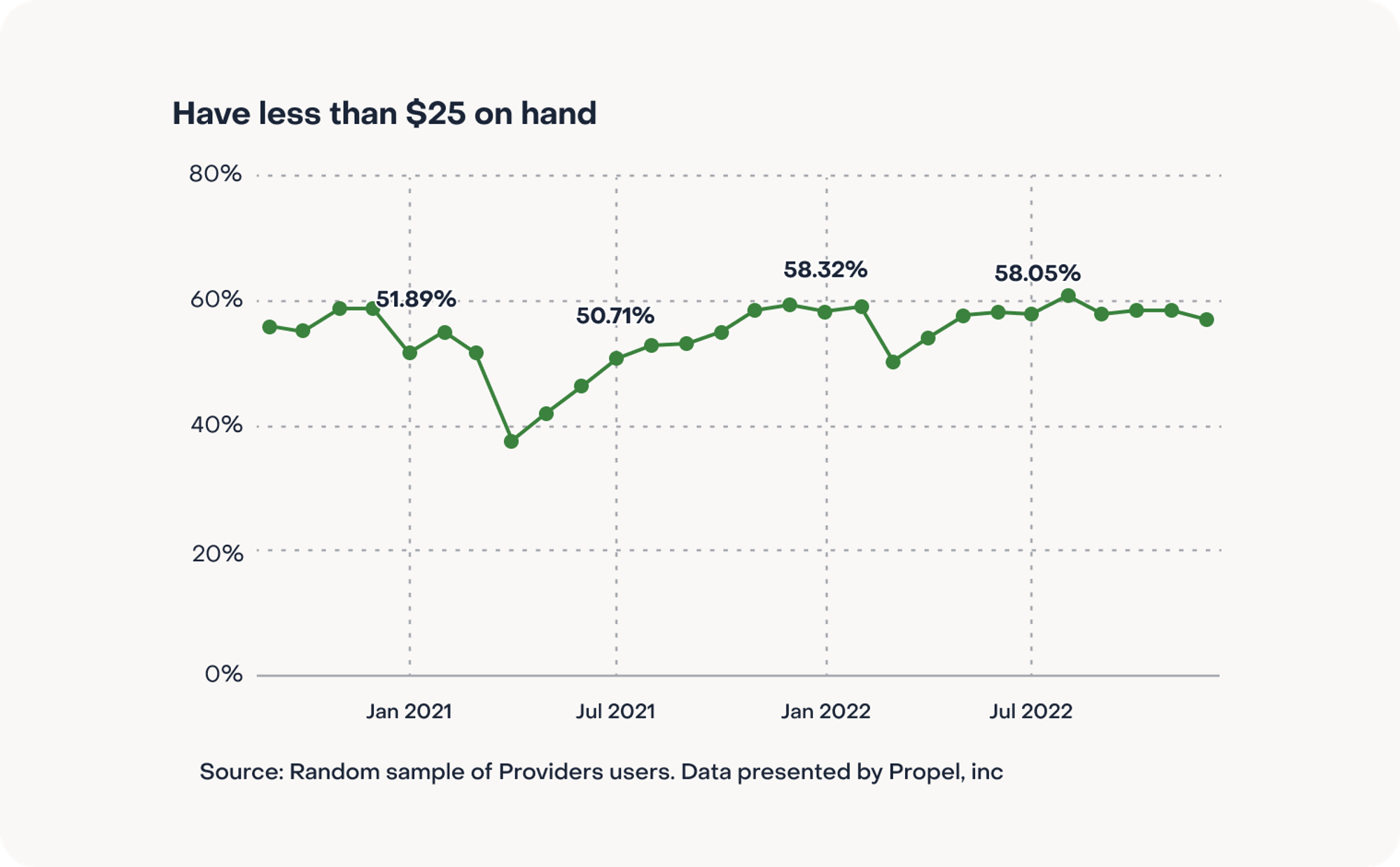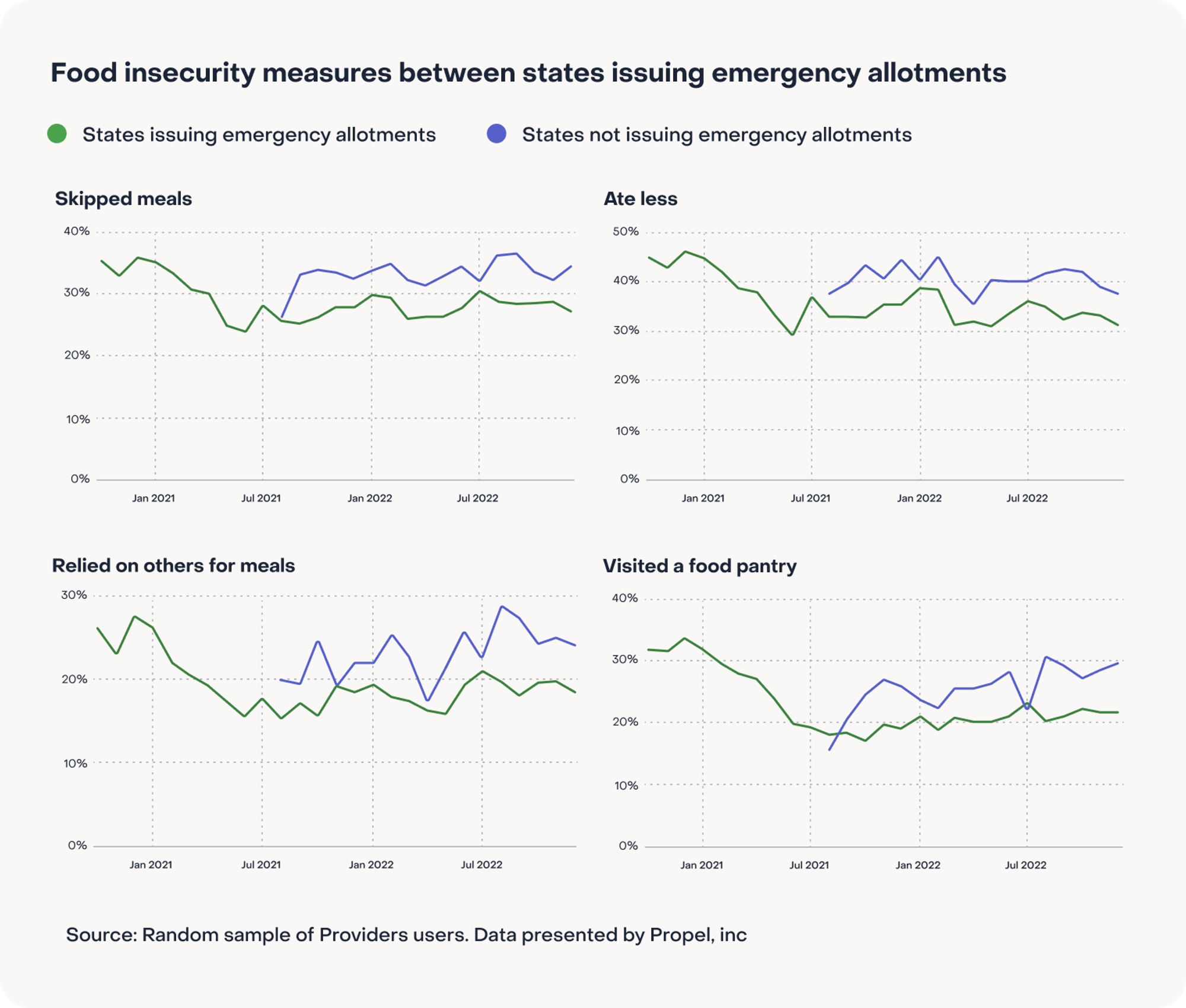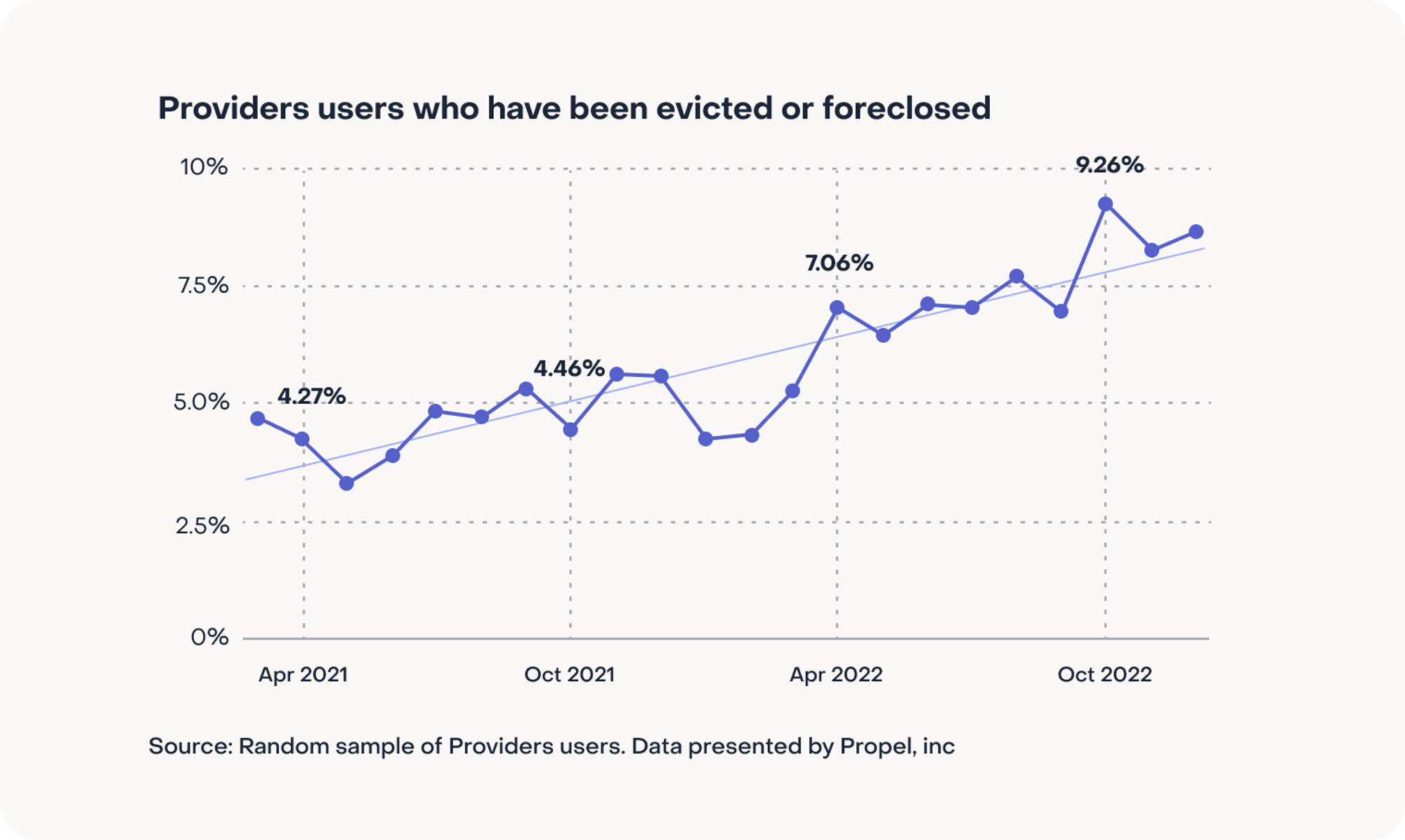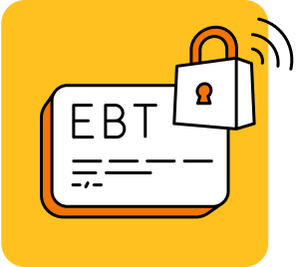2022: A year of change and challenge
Three trends defined financial well-being in 2022 for the over 5 million households that use the Propel app to manage their SNAP benefits. Inflation was a deep and persistent challenge; a significant cleavage in food security emerged between states still issuing emergency allotments of SNAP, and those that are not; and housing and energy insecurity rose dramatically.
- Rising prices affected SNAP households immensely, increasing costs across the board.
- Emergency allotments of SNAP are helping many cope with inflation, but those that can’t count on these benefits are worse off.
- SNAP households are struggling to stay in stable housing and keep the lights on.
- Tax season gives hope, but relief is temporary.
- Households receiving SNAP face a challenging set of circumstances as 2023 begins.
Table of contents
- Rising prices affected SNAP households immensely, increasing costs across the board.
- Emergency allotments of SNAP are helping many cope with inflation, but those that can’t count on these benefits are worse off.
- SNAP households are struggling to stay in stable housing and keep the lights on.
- Tax season gives hope, but relief is temporary.
- Households receiving SNAP face a challenging set of circumstances as 2023 begins.
JANUARY 11, 2023#january-11-2023
SNAP households ended 2022 in a precarious financial position. Families have had any financial cushion that was built up by cash infusions during the pandemic eaten away by inflation, and they are wary of further increasing costs. Emergency allotments that increased the value of SNAP benefits have played a key role in reducing hardship in states that have continued to offer them, but will now end in early 2023. While tax season promises some relief, much of the money may already be spoken for, as households have accumulated debt and postponed as many necessary purchases as they could through the fall.
Rising prices affected SNAP households immensely, increasing costs across the board.#rising-prices-affected-snap-households-immensely-increasing-costs-across-the-board
"I have had to pawn all my jewelry to survive. The cost of food and gas has gone up so much. Friends have helped with pawn renewals. Nobody has extra right now, most are struggling hard. Most have tapped our savings; it's gone." - Propel user, Washington
Over the past year, we asked people who use Propel if it cost more, the same, or less than a year ago to cover basic food, non-food items, transportation, and utilities. Over 70% said that it cost more to cover their needs in all these categories, though food has consistently ranked highest. 89% of people surveyed reported that it cost more to make their basic monthly food purchases than it did a year ago, on average.
Rising prices means that families not only struggle month-to-month but that cash infusions also don’t go as far. Each year around March or April, we observe people who use Propel’ financial security rise and debt fall as tax refunds come in. The benefits of these tax refunds only lasted a couple of months in 2022, and the impact on financial insecurity was typically less than it was in 2021.
As the chart below shows, the percentage of users with less than $25 on hand dropped down substantially around tax time in 2021 and lasted several months before returning to pre-tax season levels. By contrast, in 2022 the dip was not so substantial and lasted far fewer months.

Emergency allotments of SNAP are helping many cope with inflation, but those that can’t count on these benefits are worse off.#emergency-allotments-of-snap-are-helping-many-cope-with-inflation-but-those-that-cant-count-on-these-benefits-are-worse-off
"SNAP emergency benefits have kept food on my table since April. When they decide to end the program I will only receive $20. That only covers 3 meals. I guess I’ll go back to not eating again." - Propel user, Texas
In each month of 2022, an average of 45% of people surveyed were running low or out of most things they needed at home, like food and household products. While this is an alarmingly high portion of SNAP households, we’ve observed a divide between the states that have ended emergency allotments of SNAP and those that have not. 51% of those in states no longer issuing emergency allotments of SNAP reported running low or being out of most things they needed at home on average in 2022.
In fact, we’ve been seeing consistently higher levels of food insecurity in states that ended their emergency allotments.* More people who use Propel report visiting a food pantry, relying on others for meals, eating less, and skipping meals at higher levels in states no longer issuing emergency allotments. Moreover, these gaps have been increasing since the summer. We expect to see these gaps close upward as emergency allotments end nationally in the coming year.

* Our analysis only begins splitting the different rates on food insecurity measures in August 2021, though some states stopped issuing emergency allotments earlier. This is because the number of survey responses from states not issuing emergency allotments was too small for us to reliably measure before August 2021.
SNAP households are struggling to stay in stable housing and keep the lights on.#snap-households-are-struggling-to-stay-in-stable-housing-and-keep-the-lights-on
"I just recently had family loan me money to catch my rent up as I was afraid to get an eviction. I have been getting…groceries [from family] as all my earned money goes to trying my best to keep a roof over our heads as I am living paycheck to paycheck barely making it." - Propel user, Michigan
A recurring challenge for people who use Propel in 2022 was housing and energy insecurity. The percentage of people who use Propel living in unstable housing has been rising since we began asking in September 2020, not dropping below 11% in 2022 and setting a new record in July at 14%.
The eviction and foreclosure rate**, as well as the percentage of people who report staying in a shelter at least one night in the previous month, have also been rising since we began tracking these metrics. The eviction rate began rising at the beginning of 2022 and reached a peak of 9.26% in October 2022. This is nearly double the average eviction/foreclosure rate in 2021.

SNAP households have also struggled more than ever in staving off utility shut offs. Over 9% of Propel had their utilities shut off each month of 2022 on average. Utility shut offs reached a new peak in October 2022 at 11.2% of households.
** The majority of these are evictions.
Tax season gives hope, but relief is temporary.#tax-season-gives-hope-but-relief-is-temporary
"I have no [holiday] plans. No money for gifts and my mom is not here anymore so I don’t plan to celebrate. Just told my kids they have to wait until income tax time to get gifts." - Propel user, Ohio
Each year, tax season typically brings much-needed financial relief. We’ve been able to assess the positive impact of this annual cash infusion for the past two years. For example, the number of people with less than $25 on hand dropped by 27% and 15% during tax season in 2020 and 2021, respectively. Similarly, the number of people paying rent on time jumped by 29% and 18% during tax season in 2020 and 2021, respectively. However, many SNAP households will not receive a refund or will get a smaller refund, since the expanded, refundable Child Tax Credit expired in 2021 and there are no stimulus payments to claim as in the past two years.
In addition, people who use Propel are ending 2022 with substantial debt. In December 2022:
- 24% had $1,000 or more in credit card debt;
- 21% owed family or friends $1,000 or more;
- 17% owed back rent or mortgage payments of $1,000 or more; and
- 11% owed $1,000 or more on utilities and/or other bills.
Households receiving SNAP face a challenging set of circumstances as 2023 begins.#households-receiving-snap-face-a-challenging-set-of-circumstances-as-2023-begins
SNAP provides essential financial support for low-income households across the nation. The past year has presented substantial difficulties for SNAP households, particularly the rising price of essential items. Pandemic-era social safety net expansions have helped prevent higher levels of food insecurity and hardship–but the end of those benefits brings a predictable rise in food insecurity and material hardship. Tax season brings a brief respite for many, but it’s just a stopgap until the next financial emergency, or a brief respite from increasing prices.
